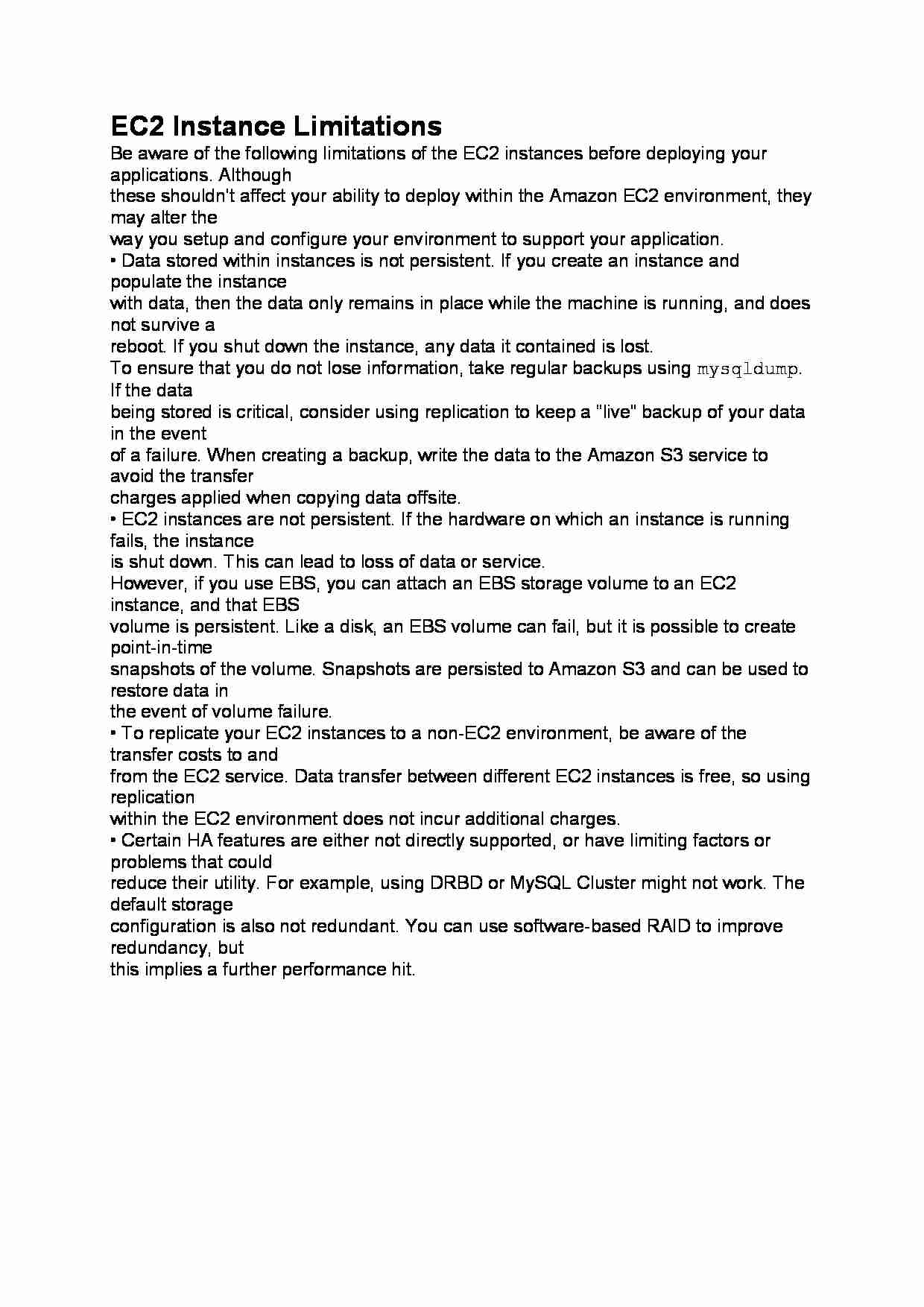
EC2 Instance Limitations
Be aware of the following limitations of the EC2 instances before deploying your applications. Although
these shouldn't affect your ability to deploy within the Amazon EC2 environment, they may alter the
way you setup and configure your environment to support your application.
• Data stored within instances is not persistent. If you create an instance and populate the instance
with data, then the data only remains in place while the machine is running, and does not survive a
reboot. If you shut down the instance, any data it contained is lost.
To ensure that you do not lose information, take regular backups using mysqldump. If the data
being stored is critical, consider using replication to keep a “live” backup of your data in the event
of a failure. When creating a backup, write the data to the Amazon S3 service to avoid the transfer
charges applied when copying data offsite.
• EC2 instances are not persistent. If the hardware on which an instance is running fails, the instance
is shut down. This can lead to loss of data or service.
However, if you use EBS, you can attach an EBS storage volume to an EC2 instance, and that EBS
volume is persistent. Like a disk, an EBS volume can fail, but it is possible to create point-in-time
snapshots of the volume. Snapshots are persisted to Amazon S3 and can be used to restore data in
the event of volume failure.
• To replicate your EC2 instances to a non-EC2 environment, be aware of the transfer costs to and
from the EC2 service. Data transfer between different EC2 instances is free, so using replication
within the EC2 environment does not incur additional charges.
• Certain HA features are either not directly supported, or have limiting factors or problems that could
reduce their utility. For example, using DRBD or MySQL Cluster might not work. The default storage
configuration is also not redundant. You can use software-based RAID to improve redundancy, but
this implies a further performance hit.
... zobacz całą notatkę



Komentarze użytkowników (0)